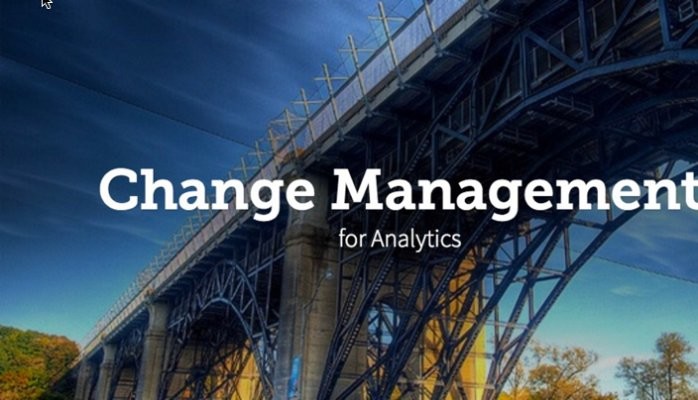
What’s change got to do with it? Transforming with analytics
I know, this is completely out of the realm of possibility, right? Actually, this “communication” is not all that far-fetched – in fact, we have seen memos like this from the field. There are so many reasons why analytics projects do not succeed, but failing to plan for how the changes will affect how people do their work has to be near the top of my list.
But what about those projects where there is no change in technology per se? Take a recent example of a real-world scenario in a large hospital system where a predictive model was being deployed to help clinicians prioritize patient cases. With a few changes here and there to avoid potentially embarrassing anyone, we’ll highlight the key points:
- The hospital’s infection rates were significantly higher than other hospitals based on their size and capabilities
- The finance and operations teams identified this as having a significant financial impact on the organization as hospital acquired infections required treatment that was not being reimbursed by the payers
- The goal of the model was to identify “at risk” patients for a specific infection that was hospital acquired
- A physician champion was selected to work with the analytics team to develop a predictive model
In the context of a change management strategy, this had all of the trappings of a great “change” project.
- There was a shared sense of urgency (and purpose)
- The team had developed a “guiding coalition” that included a highly respected and influential physician
- The model was developed with regular checkpoints along with way with and included feedback regarding the importance of several clinical indicators
- The model was developed using solid testing and validation principles
The sad news is that while the model predictions were outstanding, the model ran automatically with little impact to the infection rates.
The reason this initiative failed was multi-faceted but there were two primary challenges that the project faced:
- This was one of literally a hundred things that the physician champion had to do on a given day (competing priorities)
- There was a disconnect between what the model produced and how the clinical care teams operated. That is, there was no clear linkage between the model output and the action that was required to effect change (no linkage between data and action).
All too often we see smart people doing great work that ends up not living up to its potential or expectations, or a few heroes putting the project on their backs and forcing it through, despite the lack of a great change management strategy.
So what’s “change” got to do with this?
The management of change, “Change Management”, is more that just training or communications. It is a systematic approach that helps facilitate the transition of organizations and people from a current to a future state. In our example above, the desired future state was one in which hospital acquired infection rates were significantly lower than the current state. This is not a technology or platform change.
It is often said that a future state is only achieved when people do their jobs differently and make their own transitionfrom their current state to their future state. Change management is not about forcing change, but rather helping people prepare for the change (awareness), understanding the rationale and impact (knowledge), helping them with the tools that allow for skills development (adoption) and skills integration (commitment.)
If we truly believe that analytics can have a transformational impact on organizations, then the transformation must be managed – or as John Kotter would advocate, “Lead” the change[1].
In a few weeks, we will be presenting a paper on “Change Management: The Secret to a Successful SAS® Implementation” in Las Vegas at the annual meeting of the Global SAS Users Group. After the presentation, we will post the slides as well as the paper but in the meantime, we created this a dynamic presentation and we’d appreciate your feedback. Please let us know what you think!
[1] Kotter, J. P. (1996). Leading change. Boston, Mass.: Harvard Business School Press.

Intelligent Automation & AI Leader | Transforming Life Sciences & Healthcare
7yGood article !!
Empowering healthier lives with SAS
8yGreat stuff as always Greg!
Healthcare Data and Analytics Leader | Author of the Analytics Lifecycle Toolkit
8ySee you soon!
damn - will now have to "change" my schedule to catch this presentation in Vegas - see you then GSN
Senior Cyber Data Analytics Consultant at BNY Mellon
8yGreat article. I don't know how many times I've seen analytics implementations not getting used simply because people don't want to learn how to use them. Part of the issue I've found is that it isn't obvious how it's going to improve their job. With a combination of good usability and sufficient training to make them realize the advantages of the new way, you can get users to embrace the change.